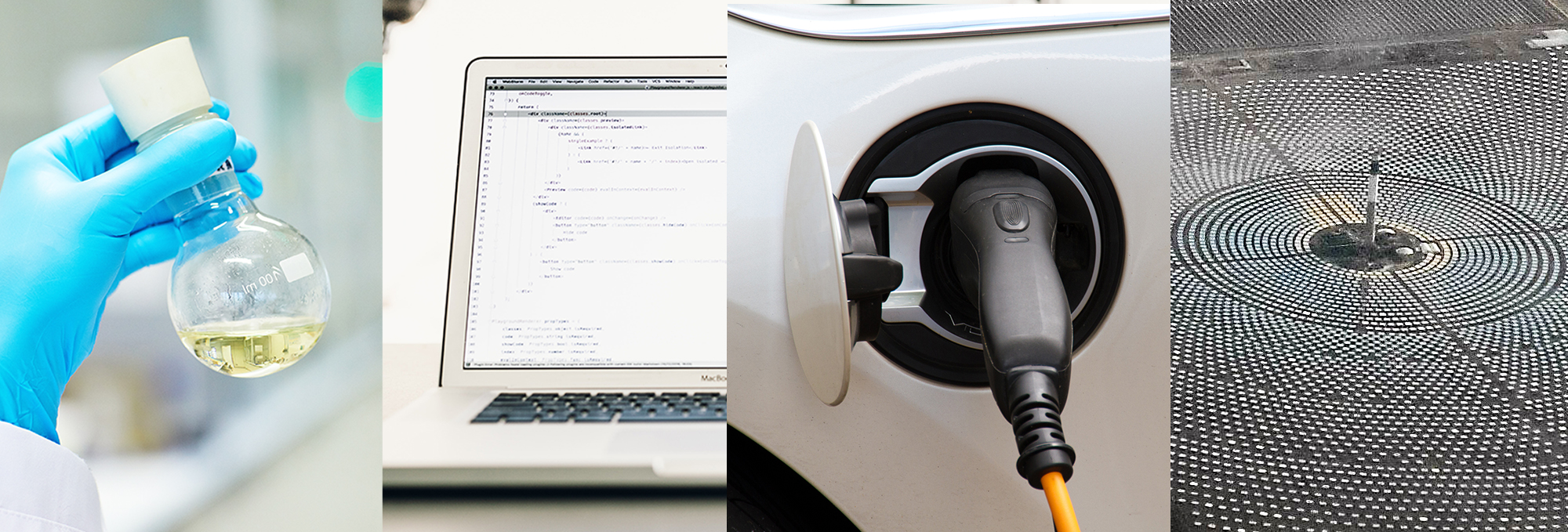

A metal-air battery is a type of electrochemical system that uses a metal as the anode (e.g., zinc or sodium) and oxygen from the air as the active cathode. This feature means that, instead of carrying both reactants inside the cell —as in a lithium-ion battery— part of the system is "open" to the environment, significantly reducing weight and improving potential energy density.
The main difference lies in their design and how they manage reactants: conventional batteries are closed systems, storing all materials internally and relying on well-controlled reversible reactions. Metal-air batteries, in contrast, have a more complex design due to oxygen handling and the air–electrode interface, but they offer massive storage potential with a lighter architecture.
Mainly because of their extremely high theoretical energy density —in some cases (like lithium-air), it could far exceed current technologies. This opens the door to electric vehicles with much greater range or high-capacity stationary systems with a lower physical and economic footprint.
Moreover, using abundant materials such as atmospheric oxygen or zinc —which is cheap and non-critical— makes them an attractive option from a sustainability and supply security standpoint. They are one of the few technologies that could truly represent a disruptive leap beyond what we currently know.
The most common metals include zinc, lithium, sodium, aluminum, and even iron, depending on the application. Each offers specific advantages. Zinc, for instance, is inexpensive, safe, and easy to handle, making it highly suitable for stationary applications. Lithium, on the other hand, has a very high theoretical energy density, making it an ideal candidate for mobile or portable use where weight is critical.
At CIC energiGUNE, we focus particularly on zinc-air and sodium-air technologies, exploring new materials to improve reaction reversibility and system stability. The key is finding the right balance between performance, cost, and long-term feasibility.
Despite their great potential, several key challenges remain. The first is oxygen management —it must enter and exit the system without introducing contaminants or causing unwanted side reactions. Another major challenge is the reversibility of redox reactions at the cathode, which tend to generate byproducts that block electrodes or degrade the electrolyte.
Additionally, aspects such as cyclability, energy efficiency, and long-term stability must be improved. While significant progress has been made, more research is needed to develop metal-air batteries that are truly competitive in terms of cost, durability, and safety.
They have strong potential in terms of sustainability. On one hand, using atmospheric oxygen as a reactant reduces material consumption and system weight. On the other hand, using abundant, non-critical metals such as zinc eases the pressure on geostrategic resources like cobalt or lithium.
Furthermore, because these systems are simpler in composition (some even use aqueous electrolytes like in Zn–air), their processing, disassembly, and recyclability may be more accessible compared to more complex technologies. All of this makes metal-air batteries a great fit for circular economy strategies in energy storage.
It depends on the type of metal-air battery. For example, primary zinc-air systems are already used in medical devices like hearing aids, where energy density and safety are highly valued. In their rechargeable form, they could be suitable for long-duration stationary storage, especially where cost and sustainability are priorities.
Lithium-air batteries, if their stability can be improved, would be perfect for high-demand electric mobility —such as drones, light aviation, or even long-range electric vehicles. These are modular, versatile systems with great potential for technological adaptation.
At CIC energiGUNE, we’ve been working on next-generation technologies like metal-air batteries for over a decade. Our approach combines fundamental research —such as studying reactions at the gas–solid–liquid interface— with applied development of materials and cell configurations.
We are currently developing bifunctional electrodes, more stable catalysts, and electrolytes capable of operating more efficiently under realistic conditions. We’re also involved in European projects aimed at scaling these technologies for industrial validation, always with a focus on sustainability, safety, and scalability. The key is turning the deep scientific knowledge we generate into real-world solutions that can make a difference in the energy market.

If you want to know the latest trends in energy storage and new developments in research, subscribe.

If you want to join a top-level team, collaborate with specialists in multiple disciplines or tell us about your concerns, don't think twice...